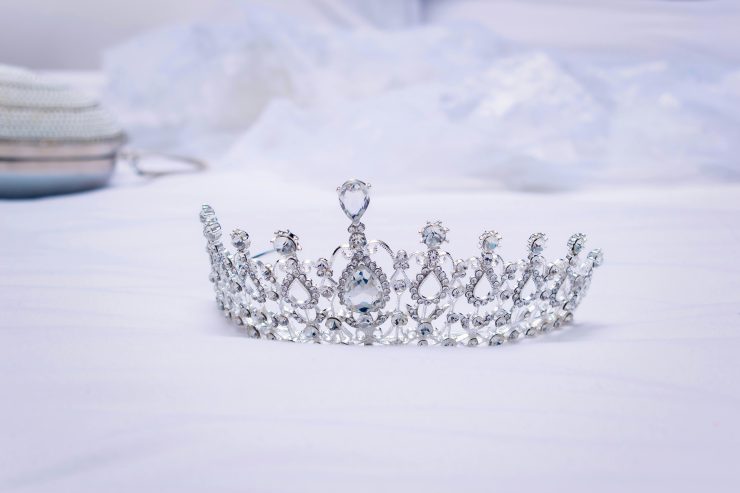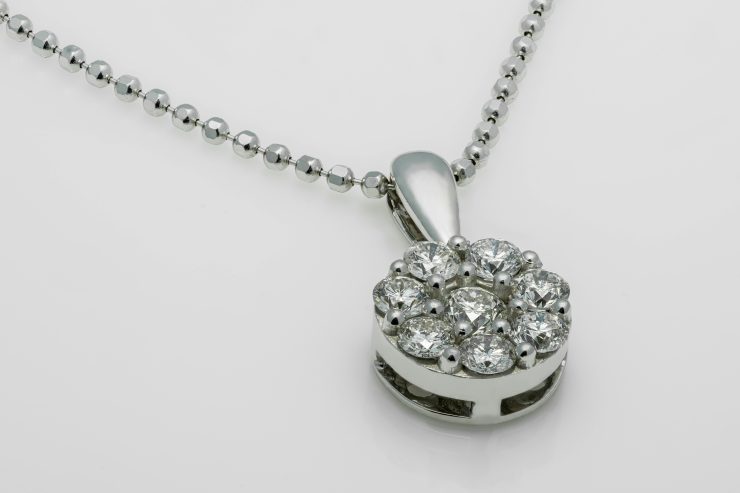Myth 1: Natural Diamonds Are Always More Expensive Than Lab-Grown Diamonds
One of the most widespread assumptions in the diamond industry is that natural diamonds are categorically more expensive than their lab-grown counterparts. While it’s generally true that natural diamonds command a higher price due to their rarity and the extensive mining process involved, this does not mean that all natural diamonds are always pricier. Several variables—including cut, clarity, carat weight, color, and market demand—heavily influence the final price of a diamond. For instance, a lower-quality natural diamond may be more affordable than a premium-quality lab-grown diamond. Furthermore, supply chain factors such as geographical origin, ethical sourcing certifications, and retailer markups can also impact pricing significantly. It’s also important to note that natural diamonds tend to retain their value better over time compared to lab-grown alternatives, which are subject to depreciation as technology advances and production costs decrease. This long-term value retention may justify the initial cost for many buyers, especially those considering diamonds as an investment or heirloom.

Myth 2: Natural Diamonds Are Environmentally Destructive Without Exception
Critics of natural diamonds often claim that their mining is categorically harmful to the environment. While it’s true that some mining operations have historically had severe environmental impacts, this blanket statement oversimplifies a much more nuanced issue. Today, many natural diamond producers adhere to strict environmental regulations and participate in responsible mining initiatives. Companies that are members of the Responsible Jewellery Council (RJC), for example, must meet comprehensive standards regarding environmental stewardship, labor practices, and community engagement. Additionally, modern mining technology and land rehabilitation programs have significantly reduced the ecological footprint of some diamond operations. It’s crucial to differentiate between responsible mining practices and illegal or unregulated operations, which are often the source of the worst environmental abuses. Moreover, natural diamond mining often supports biodiversity conservation efforts and local ecosystems through regulated land use. While lab-grown diamonds are marketed as eco-friendly, they also consume a significant amount of energy—particularly if produced using fossil fuels. Therefore, assessing environmental impact should involve a holistic comparison of both diamond types, including their full lifecycle, energy source, and carbon footprint.
Myth 3: Natural Diamonds Are Often Tied to Conflict and Human Rights Violations
The term “blood diamonds” or “conflict diamonds” has created a lasting image of natural diamonds being linked to civil wars and human rights abuses. While this issue was indeed prevalent in the 1990s and early 2000s, the diamond industry has undergone transformative reforms in the decades since. The implementation of the Kimberley Process Certification Scheme (KPCS) in 2003 marked a significant global effort to curb the trade of conflict diamonds. Today, more than 80 countries participate in this initiative, ensuring that diamonds exported and imported through certified channels are conflict-free. In addition, many major jewelers require conflict-free assurances from their suppliers, and some even go beyond KPCS by conducting independent audits and sourcing only from specific mines known for ethical practices. While no certification system is flawless, the incidence of conflict diamonds in the legal market has dropped to less than 1% according to many estimates. It’s essential for consumers to educate themselves on the provenance of their diamonds and opt for retailers who emphasize ethical sourcing and transparency. Misrepresenting all natural diamonds as inherently unethical undermines the progress made and the livelihoods of millions working in legitimate, regulated mining sectors.
Myth 4: Lab-Grown Diamonds and Natural Diamonds Are Indistinguishable
Many consumers believe that lab-grown and natural diamonds are completely identical and therefore interchangeable. This myth likely stems from the fact that lab-grown diamonds have the same physical, chemical, and optical properties as natural diamonds. Under a microscope or to the naked eye, the two are nearly impossible to differentiate without specialized equipment. However, diamond experts and gemological labs can distinguish them using advanced tools that detect growth patterns, trace elements, and fluorescence unique to each formation method. Beyond the science, natural diamonds carry geological significance as they were formed over billions of years under high pressure and temperature deep within the Earth. This deep-time origin gives natural diamonds a unique story and value that some buyers find emotionally compelling and historically significant. Furthermore, major gemological institutes such as the Gemological Institute of America (GIA) and the International Gemological Institute (IGI) now provide clear labeling and certification for both types of diamonds to ensure consumer transparency. In practice, the distinction matters to collectors, investors, and those who value the rarity and legacy of naturally formed gems.

Myth 5: Natural Diamonds Are a Poor Investment
Another commonly held belief is that natural diamonds are a poor investment due to their perceived lack of resale value. While it’s true that not all diamonds appreciate significantly over time, it is inaccurate to label all natural diamonds as bad investments. In fact, high-quality natural diamonds—particularly those with excellent cut, color, clarity, and carat weight (commonly referred to as the 4 Cs)—can retain and even increase in value over the long term. Rare natural diamonds, such as fancy-colored varieties or those with historical provenance, have consistently performed well at auctions and in private sales. Additionally, the scarcity of natural diamonds, due to their finite supply and geological formation process, gives them intrinsic value that lab-grown diamonds simply cannot replicate. Unlike lab-grown diamonds, which are increasingly mass-produced and subject to rapid depreciation, natural diamonds maintain a level of market exclusivity that bolsters their investment appeal. To maximize value retention, buyers should consider purchasing certified diamonds with detailed grading reports from reputable institutions such as GIA or AGS, and preferably from dealers with buy-back or trade-in guarantees. As with any investment, education and due diligence are critical.
Myth 6: All Natural Diamonds Are the Same
Many consumers mistakenly believe that one natural diamond is essentially the same as any other, leading them to overlook important distinctions that can dramatically affect value, beauty, and authenticity. In reality, natural diamonds exhibit an immense range of characteristics, even among stones with identical carat weights. Factors such as color grade, internal inclusions, external blemishes, fluorescence, and symmetry can influence the stone’s brilliance and overall aesthetic. Furthermore, diamonds can originate from different parts of the world—Canada, Russia, Botswana, South Africa, and Australia are among the leading sources—and each region has unique geological conditions that influence a diamond’s formation. For example, Canadian diamonds are prized not only for their quality but also for their traceability and ethical sourcing. Some diamonds also have fluorescence under UV light, which may affect their appearance under certain lighting conditions. These variances mean that two seemingly similar diamonds can differ significantly in market value and visual appeal. Buyers are encouraged to review full grading reports and, if possible, view diamonds in person or through high-resolution imaging to truly appreciate their uniqueness. This myth often stems from a lack of exposure to the complexity and individuality of each natural gem.
Myth 7: You Can’t Ethically Source Natural Diamonds
While the term “ethically sourced” is more commonly associated with lab-grown diamonds, it is misleading to assert that natural diamonds cannot be ethically sourced. In fact, many major diamond-producing countries have strict regulations in place to ensure that their mining operations adhere to labor laws, environmental standards, and community development initiatives. For example, countries like Canada enforce rigorous mining and labor practices, making Canadian diamonds some of the most traceable and ethically sourced in the world. Botswana is another case in point; the diamond industry there is a cornerstone of national development and has been credited with funding education, healthcare, and infrastructure for decades. Many mines participate in third-party certifications, such as those from the Responsible Jewellery Council (RJC) or the Initiative for Responsible Mining Assurance (IRMA), to ensure best practices are upheld. Furthermore, brands and retailers are increasingly offering transparency in sourcing by allowing consumers to trace the origin of their diamonds. Blockchain technology is also being adopted by the industry to enhance traceability and prevent fraud. Ultimately, ethical sourcing is not exclusive to lab-grown diamonds, and natural diamonds can, and often do, come from operations that contribute positively to local communities and uphold high moral standards.
Myth 8: Only Experts Can Buy Natural Diamonds Smartly
The belief that only trained gemologists or seasoned investors can make smart diamond purchases is both discouraging and unfounded. While it’s true that the diamond market has complexities, modern consumers have unprecedented access to educational resources, certification databases, and comparative tools that demystify the buying process. Reputable sellers provide detailed information about each diamond, including GIA or AGS certification, high-definition images, 360-degree video views, and even real-time consultations with gemologists. Many online retailers also offer tools to compare diamonds based on the 4 Cs, fluorescence, polish, symmetry, and price per carat. In addition, numerous independent platforms offer free education on how to evaluate diamond quality and pricing. Consumers today are empowered to make informed decisions if they take the time to research and ask the right questions. It’s also worth noting that many jewelers offer return policies, lifetime upgrades, and warranties, reducing the risks associated with purchasing a natural diamond. By approaching the process with diligence and curiosity, even first-time buyers can make a confident and informed purchase. Buying a natural diamond smartly is not about insider knowledge; it’s about preparation, education, and choosing the right seller.
Conclusion: Natural Diamonds—A Legacy of Value, Ethics, and Individuality
The world of natural diamonds is often misunderstood, shaped by myths that oversimplify or misrepresent the complexities of sourcing, pricing, ethics, and quality. While it’s crucial to remain critical of unethical practices and evolving industry standards, dismissing natural diamonds based on outdated or misleading information does a disservice to the millions of people involved in their responsible production and trade. From their geological rarity and long-term value retention to the strides made in ethical sourcing and environmental responsibility, natural diamonds offer more than just sparkle—they carry history, craftsmanship, and a legacy that can last generations. With proper research and a focus on transparency, buyers can enjoy the beauty and significance of natural diamonds without falling prey to misinformation.